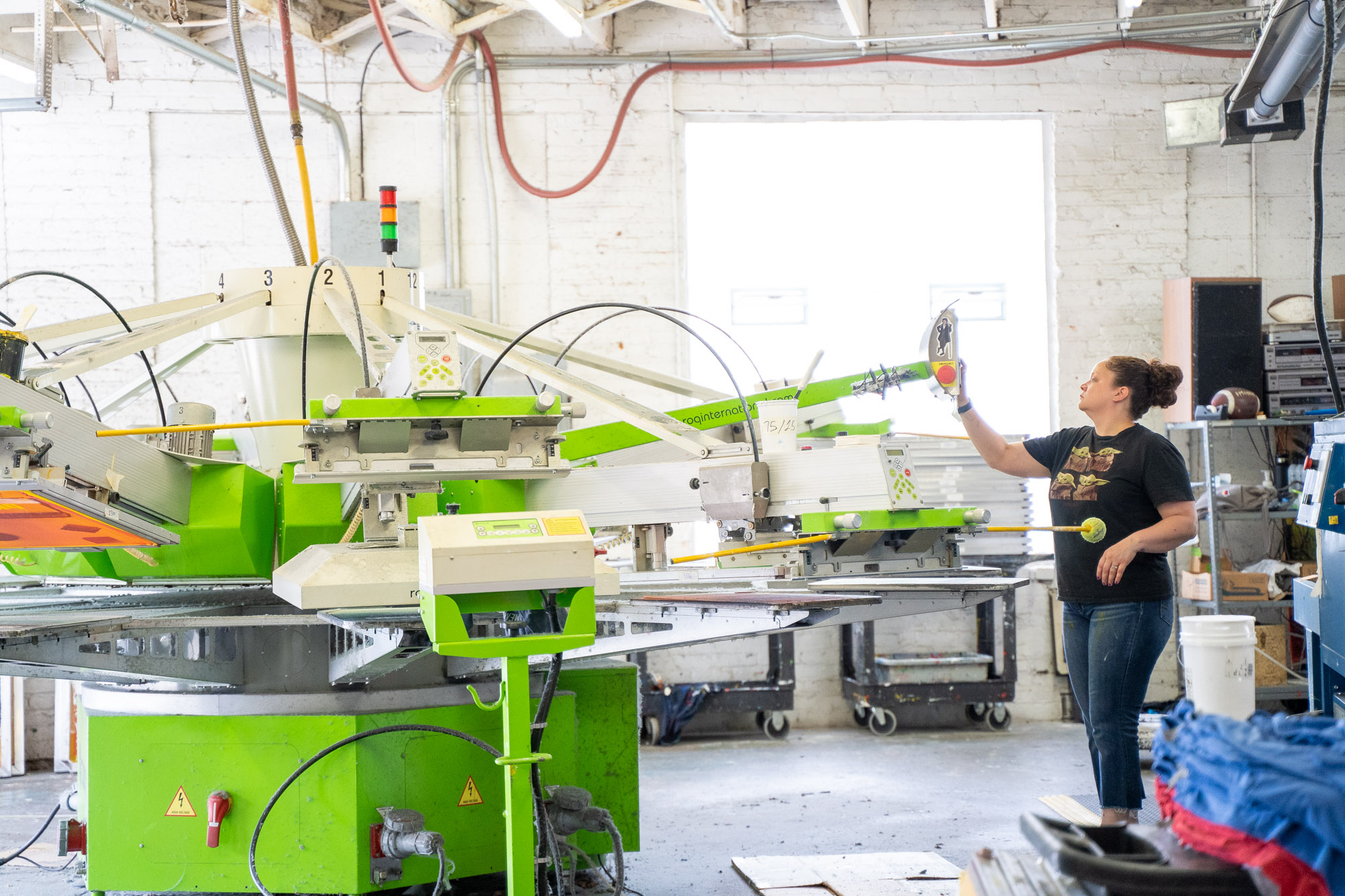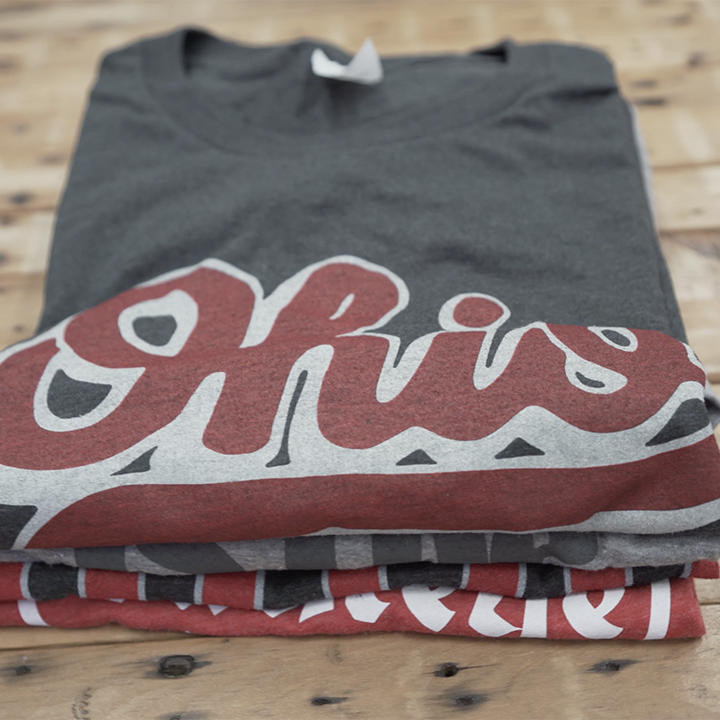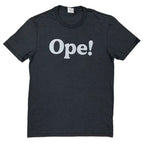There are a lot of challenges to scaling a business. The screen printing industry is like other industries. Business is business. There aren’t many differences.
At the end of the day, it doesn’t matter what industry you’re in. It’s not easy to grow a business from zero.
What I’m constantly surprised by when I talk to other business owners or read articles or listen to podcasts about small business is how unusual it is to have a financial model. When I say financial model I mean a spreadsheet that projects your operating expenses, profit or loss, sales, actual vs projected sales, payroll, cash flow, gross profit, sales by rep, production metrics, staffing, or whatever metrics are important to your business.
My dad was a broken record about this. He always said, you have to know your numbers. While I think he meant this on a more basic level than we currently have, he was right.
Unfortunately for him, I never listened to him. I was lucky to make a great finance and consultant hire who put our model together.
As the age old saying goes, you can’t track what you don’t measure. If you are using your bank account and website to measure the financial performance of your business, you aren’t measuring the correct information.
Any business is hard to grow. Screen printing particularly has its own industry specific hurdles. It’s an industry that requires significant investments in equipment in order to scale beyond a three man shop. It’s an industry that is typically very seasonal.
Up until this year we had been growing our revenue 30% per year or more. Scaling is tricky. As you add equipment and labor you have to know that you will have the sales to support payroll and the payments on your equipment. The trick is, your new equipment is most likely underutilized at the beginning and busy season staff can be more than 1.5x what is required in slow season.
If you don’t have a financial model, which I didn’t in the beginning either, you are going to struggle to make it through these jumps. This is why the numbers are so important. It becomes not just a leap of faith, but a game of numbers.
The concepts that I hear related to financial planning are too simple. It’s not enough to set a goal of 10% net income or broadly say you want to increase profit or that you want to put three months expenses in the bank or that you’re going to make the tough decisions and cut people or that you’re going to focus on your best customers.
In order to do any of these things, you need to know the specifics. You have to know your starting point for net income and all of the details that go into and have an effect on it.
I had this problem when we were growing and I had just started to hire people. It became obvious very quickly that we weren’t making money. But it wasn’t enough to just increase prices. I had to know our staffing, our capacity, our costs, and our expected future sales and capital expenditures.
I wasn’t measuring all of these things. Until we did, we couldn’t make the necessary adjustments to create a sustainable business that successfully employed people and satisfied our customers, vendors, and community.
Below, I’m going to walk you through parts of our financial model and explain why it’s helpful for us.
Our financial model is built out on a yearly basis. The numbers are based on previous year actual numbers and updated throughout the year.

At the end of each year, I sit down with Brittney and we talk about our expectations for growth. For the last three years we have set our revenue growth goal at 30%.
The great thing about having such a robust financial model is that once we set it up, we can also adjust it to analyze variations of our ideal projections. For instance, we can toggle the numbers to 20% growth. When we do this, we immediately know the impact on our net income, what our expecting operating expenses will be, how it affects staffing, how much it cuts in to my random spends throughout the year, and many other things.
This was particularly relevant this year because of COVID-19. We were forced to look at multiple scenarios where our numbers were down significantly. This allowed us to better plan for layoffs, PPP, capital expenditures, benefits, and to know what we needed to do to make a profit.
Sales. I love talking about sales. It’s what really gets me going. We’re fortunate to have a great sales team for our custom decoration business and we have a really strong retail brand with two stores.
Our financial model separates both sides of our business. B2B has historically been about 80% of our revenue and DTC has been 20%.
You can see in our model that each segment of our business is broken down even further.


Our sales tab goes on to break down our ‘sales mix %’, ‘sales per unit’, and ‘units’. This is all based on historical data and refined each year. All of these numbers reflect our seasonality.
The operating expenses tab is just as important as sales. This is where Brittney keeps me in line.


It is broken down in similar ways to the sales tab. As the year goes on the numbers are updated from projected to actual. We also include percentages. If an expense skyrockets we’ll know because the percentage will jump out of line with predictions or historical figures and we can address it from there.
Cash flow has always been a thorn in our side as we’ve grown. If one day we decided that we were comfortable and didn’t want to continue growing, this would probably go away.
Scaling requires us to hire new people, add new equipment, and expand our working area. This all takes a good amount of cash. It’s imperative for us to really have control on our cash if we want to continue to grow and survive seasonality.

Fortunately, we have been running these models and fine tuning for a few years allowing us to reliably be around a +-5% margin of error in any given month or line item. In 2019 our total sales revenue was within 1% of what we projected. Our expenses were over by 3%
The final page of our financial model that I think is super important is our staffing projections. We narrow down each role and the full time equivalents required at each position. These positions are associated with an hourly rate. Those totals are then inserted into the operating expenses.


This allows us to plan and budget for new hires and understand the sales numbers we need to hit in order to maintain current or future staffing. We can also look at labor hours relative to units produced, which helps ensure we are creating efficiencies or predict when we will need more help.
I’m not sure if this model I showed you looks complicated or not. I’m pretty sure I didn’t do a great job explaining everything (sorry, Britt). But that’s not my job. It’s just my job to hire and trust the right person to create and maintain the model. I’ve done that.
This financial model is one of the legs that our business stands on. We couldn’t succeed without it.
I’m convinced that if you don’t have a strong financial model or plan for your business, you’re doomed to fail or you’ve plateaued.
This needs to be a priority if you want to grow or if you want to pay yourself more or if you want to stop worrying about cash flow every day. Or if you want to gain confidence in your decisions.
I can’t put your model together for you. Heck, I wasn’t even allowed to major in finance because my intro to finance grade was too low. But I can share with you our template.
It’s going to be most relevant to screen printers. And you have to put in the work and enter your own numbers. But, no matter what you do, it can be a guide to help build your own financial model for your small business.
Here is the link to the template for our financial model. It is read only. You'll have to copy it to make it an editable file to use for your own business. The numbers in this version aren't actually historical or what we used for 2020 and line items were altered to be less unique to our business, but you'll get the picture.
You need to be tough and smart to run a successful small business. I hope this makes it a little bit easier.










Comments
Write a comment